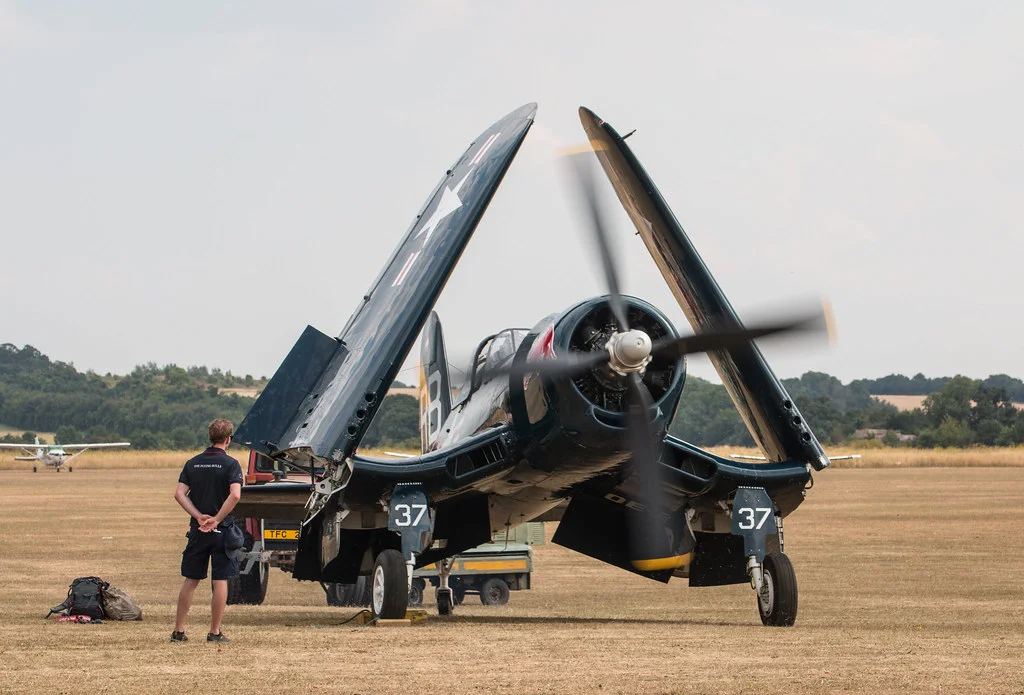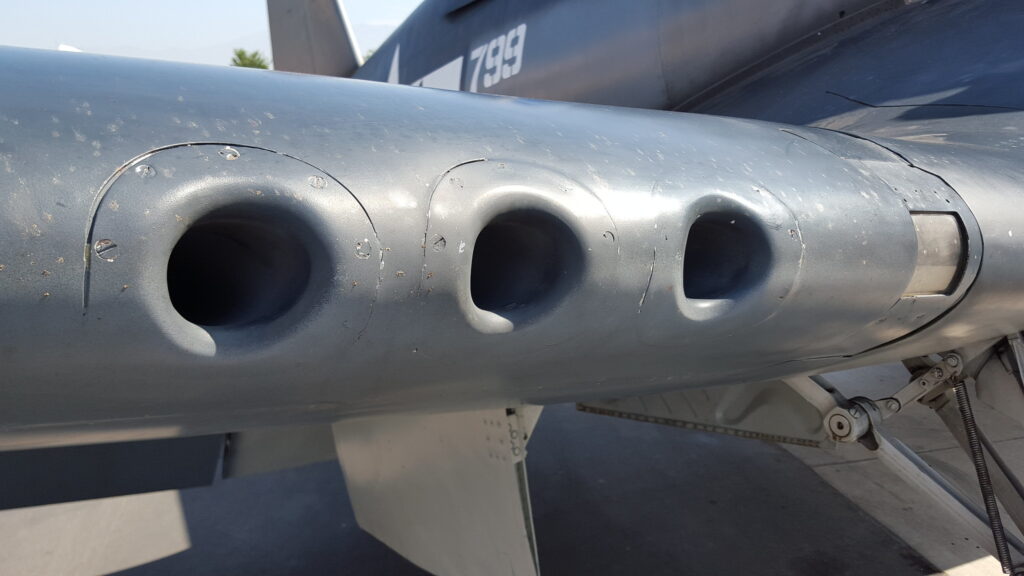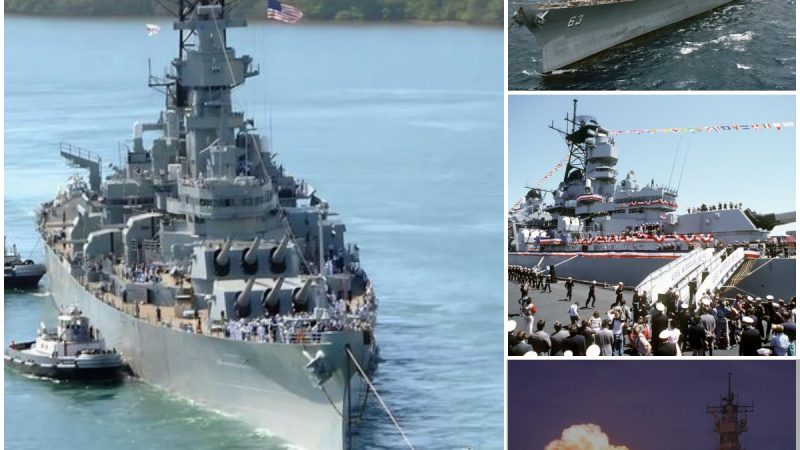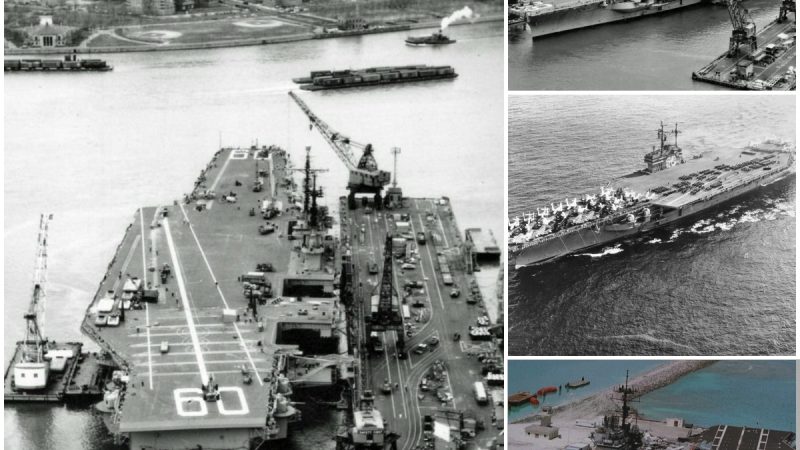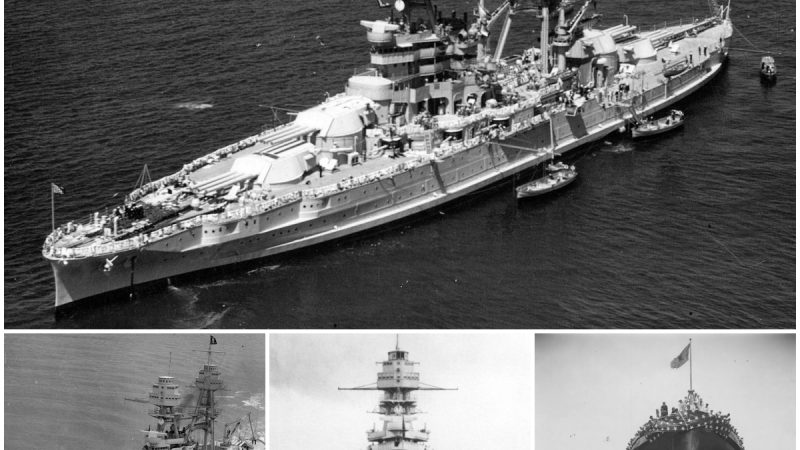Exploring the Vought F4U Corsair: The Iconic WWII Fighter
This article takes a closer look at the Vought F4U Corsair, a carrier-based WWII-era fighter aircraft known for its distinctive appearance. Throughout its lifespan, this iconic aircraft underwent numerous upgrades and even played a role in the Korean War. Let’s dive into the fascinating world of the Bent Wing Bird.
The F4U’s Background
The birth of the F4U followed a familiar pattern in aircraft development: the U.S. Navy issued a specification and invited various aircraft manufacturers to come up with designs. They sought a single-engine fighter aircraft with a 1,000-mile range and the capacity to carry at least 4 guns. Interestingly, the specification also called for the ability to carry anti-aircraft bombs.
In the late 1930s, there was a belief that fighter aircraft would fly at high altitudes above enemy bomber formations and release these bombs upon them, although this concept didn’t gain much traction.
Design
The XF4U-1 prototype was the first aircraft designed around the powerful Pratt and Whitney R-2800 Double Wasp engine, which was the heart of the F4U. With 2,800 cubic inches (46 liters) of displacement and 18 cylinders, this engine generated over 1,800 horsepower, turning a massive 13 feet 4 inches (4.06 meters) propeller.
On October 1, 1940, the XF4U became the first single-engine U.S. fighter to exceed 400 mph. It demonstrated impressive speed not only in level flight but also in dives, reaching speeds of up to 550 mph. However, these dive tests resulted in damage to control surfaces.
Despite initial setbacks, the U.S. Navy was so impressed with the performance that in 1941, they awarded Vought a contract for 584 F4U-1s, which were given the name ‘Corsair.’
Gull Wing
Arguably, the most iconic feature of the F4U’s design is its bent or inverted gull wing. Carrier-based aircraft endure greater stress than land-based planes, particularly on their landing gear. Initially, the XF4U had conventional wings with long landing gear struts to prevent the giant propeller from striking the ground.
However, longer landing gear made it challenging to land the aircraft smoothly on carriers, as it could lead to bouncing. Furthermore, the landing gear had to retract backward to accommodate folding wings, which would be impossible with overly long landing gear.
To address this issue, designers introduced a bend in the wing, shortening the landing gear and providing adequate propeller clearance. This design eliminated the risk of prop strikes and facilitated smoother landings on carriers. Additionally, the gull wing design allowed the wings to fold lower, reducing the overall stowed height of the aircraft.
F4U’s Armament
The Corsair was celebrated for its formidable armament. Initially, the prototype featured two 7.62 mm machine guns in the cowling and two 12.7 mm Browning machine guns in the wings. However, after lessons learned from WWII in Europe, it became clear that more firepower was needed.
The first production version, the F4U-1, introduced significant upgrades, including six 12.7 mm AN/M2 machine guns. A ground-attack variant, the F4U-1C, equipped with powerful 20 mm AN/M3 cannons, was also introduced.
Many pilots found the cannons more effective in various combat situations, but they faced issues with freezing at altitudes above 25,000 feet, which was eventually resolved with gun heaters.
In addition to its impressive array of guns, the F4U could carry up to 1,800 kg of bombs or eight 12.7 cm high-velocity unguided rockets. With a combination of cannons, machine guns, rockets, and bombs, the Corsair could handle a wide range of combat scenarios while operating from carriers.
Combat
The Corsair earned the admiration of its pilots for its speed, agility, and firepower. It was a versatile fighter-bomber that saw extensive combat during WWII, with over 64,000 sorties flown. It achieved an impressive kill-to-death ratio of 11:1, with 2,140 air combat victories and only 189 losses. Moreover, 70% of all bombs dropped by U.S. fighter aircraft were delivered by Corsairs.
During the Korean War, the F4U played a significant role, primarily as a close support aircraft. The F4U-5, a highly upgraded version with a more powerful engine, was used for this purpose. Notably, Marine Captain Jesse Folmar was credited with shooting down a MiG-15 using the four 20 mm AN/M3 cannons on his Corsair.
The Vought F4U, in its various versions, proved to be an exceptionally capable fighter aircraft, instilling fear in its adversaries and earning the admiration of the pilots who flew the Bent Wing Bird.
If you enjoyed this article, please follow us on Facebook and Instagram for more aviation history and insights.
Another Article From Us: Nord 1500 Griffon – French Madness?
Specifications (F4U-4)
- Crew: 1
- Height: 14 ft 9 in (4.50 m)
- Length: 33 ft 8 in (10.26 m)
- Wingspan: 41 ft (12.50 m)
- Empty weight: 9,205 lb (4,175 kg)
- Powerplant: 1 × Pratt & Whitney R-2800-18W radial engine, 2,380 hp
- Top speed: 446 mph (718 km/h)
- Cruising speed: 215 mph (346 km/h)
- Stall speed: 89 mph (143 km/h)
- Rate of climb: 4,360 ft/min (22.1 m/s)
- Range: 1,005 mi (1,617 km, 873 nmi)
- Combat range: 328 mi (528 km, 285 nmi)
- Ceiling: 41,500 ft (12,600 m)
- Armament: 6 x .50 M2 machine guns or 4 x AN/M3 cannons
- Payload: 4,000 lbs (1,814 kg) or 8 x 5 in rockets



